Fissures are small cuts and tears in the lining of the anus. This is a painful medical condition that may cause difficulty in bowel movements, and you may notice some bleeding while passing stools1.
An anal fissure is usually caused due to passing of hard stools, diarrhoea, and rectal irritation. It is quite a common disease, around 1 in every 10 people is affected by it at some point in their life2. It may affect people of all ages and gender, but children and young adults between the age of 15 and 40 years are more likely to get anal fissures, and the chances of having it decreases as people get older. People who have had fissures in the past are more likely to have them in the future if the underlying cause is not addressed.
Some of the symptoms of a fissure include3–
As soon as you notice any of these symptoms, you must consult a doctor right away instead of self-diagnosing. The tear may take four to six weeks to get better on its own if it is small, but if a fissure persists beyond eight weeks, it is chronic and needs medical attention. Your doctor may recommend that you take medications such as stool softeners and topical ointments or recommend exercises for fissures to help relieve discomfort. In case your condition doesn’t seem to improve even after these, you may have to undergo surgical procedures.
If you are suffering from a fissure, regular exercise is recommended to manage your symptoms. The doctor will suggest a few exercises depending on your condition, these exercises can relax the anal muscles and ease bowel movements. Regular physical stimulation also helps lower the chances of constipation and improves circulation. Let us find out some of the right exercises for fissures to help you cope with the pain and discomfort.

Also known as the bow curve pose, this exercise should be done by lying flat on your stomach. Try to bend your legs upwards at the knees, get them closer to the thighs and hold your ankles firmly with your arms stretched backwards. Now lift your ankles and stretch out your chest. Your whole body should be like the shape of a bow, and allow your weight to rest on your abdomen. Hold this position for about 5-6 seconds and then gently relax and return to your original position. You must repeat this for another 9-10 cycles and do this exercise twice daily. This will strengthen your pelvic floor muscles, help relieve constipation and promote digestion.

The triangle stretch exercise helps improve bowel movements and regulates digestion. Start by standing straight with your feet apart and gently move your right foot outwards and the left foot about 45 degrees inwards. The heels must be along your hips. Spread your arms out to either side of your body, parallel to the ground, with your palms facing downwards. Then bend to the right side and stretch so that the right palm touches the ground behind the right leg. Stretch your left hand up straight, perpendicular to the ground. You must hold this position for about 10 seconds. Repeat the same on the left side and continue this for 5 cycles daily to get positive benefits.

This exercise is also known as the legs up-the-wall pose and is a restorative yoga pose that is recommended for fissure patients. It creates pressure in your abdomen and allows good oxygen supply to the anal area, which helps improve digestive comfort. You may start by lying on your back and letting your hands rest on the floor next to your body. Keep the soles of your feet upwards and on the wall and raise both your legs up to a 90-degree angle. Keep breathing deeply and remain in this position for 10 minutes, and repeat it every day.

This is an easy exercise that helps promote relaxation and good blood circulation in the anus area. It also soothes and comforts the area4. Fill your bathtub with warm water and immerse the affected area in the warm water. Now, contract the muscle as if you are trying to stop passing gas or stool from the anus. Hold this and release, continue doing this, and concentrate on relaxing the muscle completely. Repeat this exercise every 3 minutes as you sit in the tub.

Brisk walking every day is itself a wonderful exercise and may help in regulating bowel movements. Make sure that you are not walking too fast and running out of breath, nor should you walk too slow, which causes no sweating. Walking helps promote overall good health. It lowers the chances of the formation of hard stools and stimulates and promotes blood flow, which is helpful if you have a fissure.
These are some of the exercises you can try doing regularly if you are suffering from or have recovered from fissures, which can also help keep problems like constipation in check. These exercises especially target the lower part of your body and ensure normal bowel movements, improve anal sphincter control, and also help manage daily stress. Do not perform these exercises without consulting your doctor if you have any orthopaedic problems.
Also Read: Best Food Diets For People With Anal Fissures
While exercises are good for you and may relieve symptoms of fissures, it is important to know which exercises you must do and which exercises you must avoid so that your condition doesn’t worsen. All kinds of intense workouts and strenuous exercises that tighten the butt muscles may aggravate your symptoms and are not recommended if you are suffering from a fissure. These are the activities to avoid:
Also Read: Safe Stretching Exercises You Can Try If Suffering From Phimosis
Fissure, even though a common disease, can make it difficult for you to live a normal life. You must consider consulting a doctor at the earliest if you notice any symptoms of fissures, he or she can help you with the right diagnosis and treatment. Practising the doctor-recommended exercises and following diet and lifestyle changes may prove to be helpful for you.
Also Read: What to Eat and What to Avoid in Anal Fistula
It is always recommended to consult a certified yoga instructor and understand the correct postures that can be practised by a person based on their health status. There are several yoga postures and exercises that may be good for a person with fissures5, but contraindicated for a person with back pain, joint pain, spine-related problems, and so on.
Most anal fissures start getting better after a few days or weeks and you can tell it by less or no sharp pain during bowel movements.
Chronic anal fissure symptoms may include painful bowel movements without bleeding.
Disclaimer: The information provided here is for educational/awareness purposes only and is not intended to be a substitute for medical treatment by a healthcare professional and should not be relied upon to diagnose or treat any medical condition. The reader should consult a registered medical practitioner to determine the appropriateness of the information and before consuming any medication. PharmEasy does not provide any guarantee or warranty (express or implied) regarding the accuracy, adequacy, completeness, legality, reliability or usefulness of the information; and disclaims any liability arising thereof.
Piles or hemorrhoids are a medical condition that causes the veins around your rectum and lower anus to swell1. Symptoms of piles include pain and discomfort during and after passing stools while sitting and standing up, painful lumps in and around the anus, and bloody stools.
Piles can be both internal and external. Internal piles cannot always be diagnosed during the external examination, however, they sometimes may swell out of the anus region as in the case of external hemorrhoids. Piles is a disease that is not exactly rare, however, the symptoms can sometimes be easily missed as they are not always detectable and obvious. With surgery, piles can be removed. However, if your condition is not severe, your doctor may recommend some medicines, lifestyle and dietary changes that will help you cope with the condition. This article will shed light on the types of food you should eat to deal with piles more effectively.
Piles are a rather painful condition that causes discomfort when you are sitting or even standing. Fortunately, several food items can help reduce the risk factors of piles (constipation, bloating and other digestive issues) from occurring in the first place:
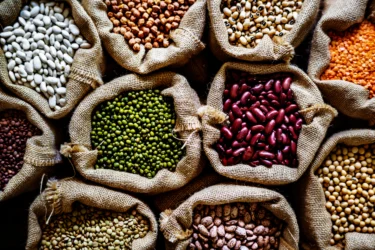
By making sure you are getting enough fibre in your diet daily, you can reduce the chances of piles flare-ups2. There are essentially two kinds of fibre that can be derived from food: soluble and insoluble. The soluble fibre forms a gel in your digestive tract and can be digested by friendly bacteria. On the other hand, insoluble fibre helps bulk up your stool3. Legumes include beans, lentils, peas, soybeans, peanuts and chickpeas that are loaded with both kinds of fibre but are especially rich in the soluble type. Lentils and other legumes can bulk up your stool, making it less likely that you have to strain when going to the bathroom.
Vegetables like cauliflower, Brussel sprouts, broccoli, bok choy, kale, arugula, tulips, cabbage and radishes are known for having an immense amount of insoluble fibre4. Cruciferous vegetables like these contain a plant chemical called glucosinolate that can easily be broken down by gut bacteria5, thus helping promote easy stool passing and helping reduce symptoms of a new flare-up of piles.
Turnips, beets, rutabagas, carrots, sweet potatoes and potatoes are root vegetables. They keep you full for a long time and are extremely nutritious. Besides, they are full of gut-friendly fibre. For example, cooked and cooled white potatoes contain a kind of carbohydrate known as resistant starch, which passes through your digestive tract undigested. Similar to soluble fibre, they help feed your gut bacteria and pass stool easily6.
Packed with vitamins like vitamin C and minerals, bell peppers are also a great option while adding fibre to your diet. A cup of mild bell peppers contains about 3.1 grams of fibre7. With a water content of about 93%, bell peppers are also very hydrating and help with clear stool passing.
Similar to legumes, whole grains are a nutritional powerhouse as they retain their germ, bran and endosperm, all of which are loaded with fibre content. Whole grains are known to be rich in insoluble fibre. The benefit of insoluble fibre is that, since it cannot be digested, it adds volume to your stool and helps you excrete with ease, with less pain and discomfort that comes with piles. Spelt, quinoa, barley, brown rice, oats, whole rye and corn are some beneficial whole grains. For example, you can prepare and consume oatmeal to reduce symptoms of piles. Oatmeal contains a special soluble fibre called beta-glucan, which benefits your gut microbiome by acting like a prebiotic, which in turn feeds the healthy gut bacteria and helps you excrete with ease8.
This vegetable brings life and colour to your plate, while also feeding you with an immense amount of fibre. There are various kinds of squash, like pumpkin, acorn squash, yellow squash, butternut squash and zucchini. Acorn squash has the highest amount of fibre, about 9 grams in every cup of this vegetable (205 grams). Sautéd, roasted or boiled squashes may help ward off any symptoms of piles.
They are an ideal addition to your diet to calm piles symptoms. Loaded with pectin and resistant starch, a single banana provides an average of 3 grams of fibre. The combination of pectin and resistant starch helps in clearing the stool easily.
Tomatoes contain loads of fibre and have good water content. It aids in easing symptoms of constipation by making you strain less while passing stools. Tomatoes contain a natural antioxidant called naringenin that, according to some scientists, has a laxative effect on constipation9.
Fruits like oranges, lemons and grapes are rich in vitamin C. The inner skin of these fruits, beneath the outer layer, has a lot of fibre. Citric fruits have ample water content that softens stools. Like tomatoes, citrus fruits also contain naringenin, a natural compound that has a laxative effect.
Based on the Dietary Guidelines for Americans, it is recommended that you consume an adequate amount of dietary fiber for optimal health. For a 2,000-calorie diet, this means aiming for around 28 grams of fiber per day2, 10.
Dr. Rajeev Singh, BAMS
Also Read: Potassium-Rich Fruits to Boost Your Potassium Levels Naturally
All food items that are low in fibre should be avoided. Some of them are as follows:
Also Read: 17 Protein-Rich Foods For a Healthy Life
Thus, with proper care, good food, discomfort, pain and inflammation caused by piles can be curbed and reduced while avoiding controversial food items. Depending on the severity of your condition, along with medication and a good diet, you should be able to overcome your condition in a few weeks to a few months.
Did you know that hemorrhoids are a common condition affecting both men and women? Surprisingly, more than half of adults over the age of 50 experience hemorrhoids at some point in their lives.
Dr. Siddharth Gupta, B.A.M.S, M.D (Ayu)
Also Read: Food Choices for Hernia: What to Eat and Avoid
In general, less severe piles conditions go away in a few days on their own with a well-balanced diet or with over-the-counter drugs. Larger haemorrhoids, particularly ones that cause a lot of pain, swelling and itchiness, will not go away on their own and may require treatment from a doctor to heal, like medication or may have to be surgically removed.
The consumption of eggs improves the movement of the intestines and helps in making the stool soft. Eating an egg daily gets rid of constipation and other stomach-related problems. Not only this, eggs contain a lot of protein and fat, which is beneficial for patients. Therefore, you can consume eggs in moderation if you have piles.
Papain present in raw papayas is beneficial to combat several health problems like excess of unhealthy mucus in the stomach, overcoming the deficiency of gastric juice, dyspepsia (indigestion) and intestinal irritation. The ripe fruit, if eaten regularly, corrects constipation, bleeding piles and chronic diarrhoea11.
Disclaimer: The information provided here is for educational/awareness purposes only and is not intended to be a substitute for medical treatment by a healthcare professional and should not be relied upon to diagnose or treat any medical condition. The reader should consult a registered medical practitioner to determine the appropriateness of the information and before consuming any medication. PharmEasy does not provide any guarantee or warranty (express or implied) regarding the accuracy, adequacy, completeness, legality, reliability or usefulness of the information; and disclaims any liability arising thereof.
Waking up early is usually associated with snoozing your alarms and dreading going to work. This, however, is not the norm anymore! Early mornings are now seen as a respite for many. It is a time of undisturbed peace, serene skies and plenty of time to get recharged for your day. With the new social media trend of following a ‘billionaire’s routine’ which includes waking up at 5:00 am and following certain habits, we also bring you 7 reasons why you should wake up early in the morning!
While it may feel like a chore, waking up early soon becomes a habit and a good one that too to inculcate in one’s hectic routine. Not only can you benefit physically but also mentally.

When you wake up earlier than your scheduled time, not only can you savour your morning coffee but do a plethora of activities. Do not have time for your hobby? Simple, wake up early. Want to incorporate yoga into your routine? You know it, wake up early! Scientists have also proven the existence of sleep inertia. A two-four hour period after waking up where the brain is unable to function at its full capacity and a sleep-induced fog is experienced. Once you start changing your habit, your productivity and energy levels will increase massively.

Those who wake up early also tend to fall asleep at a prescribed time. Your body feels more tired and instead of staying up till 3:00 am binging a series, you will find yourself more inclined to take a rest. Going to bed early can enhance your energy and mood levels. This allows you to complete all four-six cycles of sleep so you can feel rejuvenated the next day2.

It is a scientifically proven fact that beauty sleep is needed to make your skin look fresh and younger. Sleep deprivation or inappropriate sleep cycles can cause fine lines, wrinkles, dark circles and acne. Your skin cells are regenerated while you sleep, fixing the UV damage and increasing the collagen and blood flow. Waking up early also gives you plenty of time to relish your skincare routine.

When you wake up early, you are automatically inclined towards treating yourself with a delicious breakfast that is healthy and makes you feel energized. Breakfast is the most important meal of the day. It gives you a boost of vitality and you can use the opportunity to be mindful of your consumption throughout the day3.

You have extra time to get ready and look your best for the day while enjoying the empty roads and no traffic jams. Waking up early leads to leaving the house earlier for your work, school or college. Less traffic leads to feeling enthusiastic and optimistic about the day while facing less pollution. What’s more, is that you are guaranteed to never be late for a meeting again!

If you are having trouble keeping track of things or nothing seems to be going according to plan you need some time to yourself. Waking up early can assist you in evaluating your plans with a clear and calm mind. Plan the day ahead of time, make a to-do list, journal or use a planner. All these are great ways to feel put together.

Research has proven that those who wake up early have shown better mental health symptoms. They are optimistic, satisfied and feel positive about situations. It also lowers the chance of mental illnesses which is usually found in those who go to sleep late and wake up late. This is also an excellent way of reducing stress because you have already started the day earlier.
As the brain is known to be more alert early in the morning, focusing on important tasks earlier in the day would go a long way to make better decisions and it is also known to improve memory and concentration.
Dr. Ashish Bajaj, M.B.B.S., M.D. in Clinical Pharmacology and Toxicology
Various studies1 suggests that rising early in the morning as described in ancient Indian tradition influences the process of attention and can improve the ability to recall.
Dr. M.G. Kartheeka,MBBS, MD(Pediatrics)
Lastly, we must aim to be kind to ourselves and sleep in late some days. Routine and reset days are as necessary as cheat days to maintain balance. Waking up early soon becomes a habit that leads us to be better versions of ourselves.
1. Kumaran VS, Raghavendra BR, Manjunath NK. Influence of early rising on performance in tasks requiring attention and memory. Indian J Physiol Pharmacol. 2012 Oct-Dec;56(4):337-44. PMID: 23781653.Kumaran VS, Raghavendra BR, Manjunath NK. Influence of early rising on performance in tasks requiring attention and memory. Indian J Physiol Pharmacol. 2012 Oct-Dec;56(4):337-44. PMID: 23781653. Available from: https://pubmed.ncbi.nlm.nih.gov/23781653/
2. Kecklund G, Akerstedt T, Lowden A. Morning work: effects of early rising on sleep and alertness. Sleep. 1997 Mar;20(3):215-23. doi: 10.1093/sleep/20.3.215. PMID: 9178917. Available from: https://pubmed.ncbi.nlm.nih.gov/9178917/
3. Bougard C, Bessot N, Moussay S, Sesboue B, Gauthier A. Effects of waking time and breakfast intake prior to evaluation of physical performance in the early morning. Chronobiol Int. 2009 Feb;26(2):307-23. doi: 10.1080/07420520902774532. PMID: 19212843. Available from: https://pubmed.ncbi.nlm.nih.gov/19212843/
Disclaimer: The information provided here is for educational/awareness purposes only and is not intended to be a substitute for medical treatment by a healthcare professional and should not be relied upon to diagnose or treat any medical condition. The reader should consult a registered medical practitioner to determine the appropriateness of the information and before consuming any medication. PharmEasy does not provide any guarantee or warranty (express or implied) regarding the accuracy, adequacy, completeness, legality, reliability or usefulness of the information; and disclaims any liability arising thereof.
Links and product recommendations in the information provided here are advertisements of third-party products available on the website. PharmEasy does not make any representation on the accuracy or suitability of such products/services. Advertisements do not influence the editorial decisions or content. The information in this blog is subject to change without notice. The authors and administrators reserve the right to modify, add, or remove content without notification. It is your responsibility to review this disclaimer regularly for any changes.
Dates are a popular type of fruit that have been around for a long time. The origin of dates can be traced back to almost 5320 BC. The fruit is a staple item for people in the Middle East and North Africa and is mainly cultivated in these regions1.
Dates are believed to be highly beneficial for the body due to their rich composition of macronutrients and many other healthy elements. To reap their health benefits, they should be included in your diet and there are many simple ways to do this.
In this article, we will be discussing about the nutrient profile and the potential health benefits of dates. We will also be discussing some date recipes which can help you incorporate dates into your routine diet.
Dates are basically tropical fruits that are grown on date palm trees. Scientifically known as Phoenix Dactylifera, they are proposed to be one of the healthiest fruits in the world. Dates are categorized as dry fruits and have been an important part of West Asian heritage.
The nutrition data of dates is power-packed. The fruits are packed with a lot of essential vitamins and other nutrients that can be extremely helpful to your overall health. When it comes to nutrition, their high fibre and carbohydrate content undoubtedly make them one of the healthiest dry fruits1.
Nutritional Value per 100g of dates:
These values may differ from variant to variant.
Dried or fresh dates are both very good sources of vitamins including B1, B2, B3, and B5. These are all essential vitamins that are required to maintain the optimum health of your body.
Thus, the high nutrient content of the fruit contributes to its highly beneficial properties.
In this section, we will be discussing the various benefits that dates may have for your health.
Dates are popular for providing energy to the body all through the day. This is because of their high calorie and natural sugar content. 100g of dates provide about 314 kilocalories of energy, making them a great source of energy boost1. The dry fruit version of dates is even richer in calories than the fresh fruit.
While much of this energy is in the form of sugars (like fructose and glucose), it has ample amounts of fibre and a low glycaemic index. This means that 2-3 dates at a time can be a safe source of low-fat energy even for diabetics.
The fibre content in dates fruit is extremely high, this can be highly beneficial to people who are suffering from health issues caused due to irregular bowel movements. Dates can help in regularising bowel movements when consumed daily. They can aid your digestive health and help you lead a healthy life. Therefore, it can be conclusively said that the date’s benefits on your overall diet are unparalleled2.
Inflammation is a reactive mechanism of the human body that helps fight against several diseases, trauma, and infections. The regulation of inflammatory agents plays a crucial role in maintaining the overall health of the patient. Dates are rich in compounds known as antioxidants that help fight inflammation in the body3.
When compared to other dried fruits in the same category, dates top the chart with the highest concentration of antioxidants. Dates are rich in antioxidants including:
These antioxidants are effective in reducing inflammation within the body and therefore help avoid the risk of several diseases.
Inflammatory cytokines such as Interleukin can be extremely dangerous to your brain. The increased presence of IL-6 (Interleukin 6) is attributed to the development of neurodegenerative diseases such as Alzheimer’s disease.
The regular use of dates has been found to be beneficial in reducing the IL-6 levels and thereby helping in reducing the risk of developing brain degenerative conditions such as Alzheimer’s. An in-vivo study4 on mice has also shown that the inclusion of date palm in the feed leads to the reduction of amyloid beta-protein activity which can reduce the production of plaques that can harm the brain. Plaques are highly dangerous and can lead to cell death causing severe conditions such as Alzheimer’s. The study4 also showed that consuming dates reduces issues related to anxiety disorder and also helps in boosting memory and learning.
The effects regular consumption of dates can have on your neural health are many. Dates are rich in nutrients such as potassium which is very beneficial for your neurological health. So, besides preventing degenerative diseases such as Alzheimer’s, dates can also help in the overall improvement of your brain and nervous system.
Eating dates benefits women as it is believed to increase the likelihood of natural labour, reducing the complications associated with caesarean deliveries. Some studies5 suggest that incorporating dates into a pregnant woman’s diet can help lower the pressure during childbirth owing to specific compounds present in dates that mimic oxytocin, facilitating healthy contractions. Additionally, the high tannin content in dates aids in the labour process, making it smoother and more comfortable for women. These date benefits in pregnancy make them a valuable addition to a pregnancy diet.
Dates have a compound called beta D-glucan which is advantageous in promoting anti-tumour activity within the body. The high concentration of antioxidants in dates also helps in reducing the activities of free radicals (elements that can cause cancer) and thereby reduce the risk of cancer occurrence3. Thus, daily consumption of dates may have a positive effect for avoiding cancer risks.
Bacterial infections are usually discomforting and can sometimes become dangerous also. Antibiotics are the mainstay for treating bacterial infections.. However, natural remedies like dates may also help alongside. A study12 conducted using extracts from the pits and leaves of date revealed that it had active resistance against certain harmful bacteria. It was found that dates can be beneficial against deadly microbes such as E. coli and pneumonia. But do remember to speak to your healthcare advisor before doing any treatment on your own.
Diabetes Mellitus is one of the most common diseases around the world. Diabetes is treated using a combination of several oral medicines and insulin supplementation.
It is proposed that dates have the ability to increase the production of insulin and also have several properties that can help reduce the rate of absorption of glucose from the intestine. This can help in reducing the risk that is posed by diabetes. The reduction of glucose absorption helps lower blood glucose levels that are beneficial for people suffering from diabetes6. The exact mechanism of how dates help in reducing the effects of diabetes is still being researched upon. Thus one should consume them within limits as prescribed.
Dates have various properties that can help your kidneys stay healthy in difficult circumstances. It is found that some varieties of date fruit can actively reduce the lesions caused by nephrological disorders. Date extracts can also help reduce excess plasma and creatinine in the kidney that improves the overall health of kidneys2.
There are various vitamins and minerals present in the fruit which can help in improving the sperm count and also in increasing sexual libido in males. The microelements that are constituents of date palm such as estrone and sterols, may play a role in improving male fertility3. Date pollen extracts are also studied widely for their positive effects on male sperm motility and count.
Dates are highly rich in micronutrients such as selenium, manganese, magnesium and copper7. These micronutrients help in the development of your bone health. Dates can be an important supplement to your diet if you are suffering from bone problems. The micronutrients in dates may also help in dealing with bone conditions such as osteoporosis. So, including dates as a part of your diet can be beneficial for your bones.
Dates are a very good alternative to harmful chemicals found in skincare products. The high concentration of vitamin C and vitamin D in dates ensures that your skin receives all the nourishment required for healthy glowing skin. Vitamin C & D works for the improvement of your skin’s elasticity which is very hard to maintain as you age.
The nutrients present in dates, are helpful in improving your skin health and making you look younger for a longer period of time8. Dates are also useful in maintaining a healthy balance of melanin in your skin by reducing the chances of it being deposited in various locations.
Dates are believed to be beneficial for hair loss possibly due to their high iron content. The increased iron content in dates helps in maintaining the blood flow to the scalp and providing the required nourishment9. The increased flow of oxygen to your scalp can facilitate the growth of new hair and possibly also reduce the rate of hair fall.
Excessive alcohol use can have a major effect on your productivity. There are various products that are used to counter alcohol-induced hangovers. Although not conclusively proved, it’s traditionally believed that soaked dates may help reduce the effects of inebriation and hangovers. It is seen in many tribal communities that date palm extracts are added to beer to reduce the intoxicating effect it has.
Dates are rich in vitamin A and their regular consumption may help protect your eyes from conditions like night blindness in the long run. Date palms are one of the oldest natural medicines that is used in traditional medicine forms to heal problems arising out of vitamin A deficiency, managing eye issues being one of them.
Substituting white sugar with dates that are turned into a paste can make your meal sweet and healthy as well as help your mange your weight at the same time. The high content of fructose in dates provides a caramel-like sweetness in the fruit. So, you can replace a lot of processed sugar in your diet by some natural date paste. Plus, dates have ample amounts of fibre and a low glycaemic index which are beneficial for weight management10. But remember to consume in moderation else they can have an opposite effect.
In some studies11, consuming dates regularly is compared with taking iron supplements for managing anaemia. The results showed that dates can be used to deal with anaemia by increasing the iron content in haemoglobin. This may help solve a problem with taking iron supplements regularly for anaemia as these supplements tend to cause gastric disturbances. While this is not one of the generalized health benefits of dates, it does go to show that this superfood can be surprisingly useful.
Did you know that date palms are incredibly resilient trees? They possess an amazing ability to survive and thrive in harsh environments. Despite challenging conditions like extreme heat, aridity, and limited water availability, date palms have adapted to these circumstances and can still produce their delicious and nutritious fruits. It’s truly fascinating how nature equips these trees to flourish even in the most adverse of circumstances13!
Dr. Siddharth Gupta, B.A.M.S, M.D (Ayu)
In the below section, we will show you the magic dates can bring to your diet when used correctly.
Making a smoothie for breakfast is one of the easiest things to do. It adds enough nutrition to the body to get through the morning.
Ingredients:
Method of Preparation:
An oatmeal breakfast can keep you up and running for a considerable amount of time. Introduce a little date to it and you have a superfood on your plate.
Ingredients:
Method of Preparation:
Caramel candies are always a delight. Mix it with the nutrition and the excellent taste of Tahini dates and you have a healthy candy to munch on.
Ingredients:
Method of Preparation
Oranges are an excellent source of a bunch of natural vitamins. Combine it with dates and you have a highly nutritious drink that is extremely tasty.
Ingredients:
Method of Preparation:
This vegan bread is a healthy date snack and a flavourful breakfast choice. Thanks to the dates, this bread has a hint of sweetness and can serve to be the perfect appetizer with dates for people who do not enjoy consuming sweetened food.
Ingredients:
Preparation:
Experiment using the above recipes to create an appetite for dates and improve your overall health.
Fascinating fact: Dates have been a dietary staple for over 5,000 years in the Middle East and North Africa, providing essential nutrition and sustenance to communities in arid regions. These ancient fruits have played a vital role in ensuring food security and nourishment in challenging environments14.
Dr Rajeev Singh, BAMS
Also Read: Amazing Health Benefits of the Avocado
Dates can be highly beneficial for overall health. They are packed with nutrients that are essential for proper functioning of the body. Dates can easily be incorporated in your diet to soak in their health benefits. They can be consumed as is or blended with baked goods to provide a sufficient amount of energy to keep to you going throughout the day. But remember, dates have a high natural sugar content, so they should not be consumed in large quantities. It’s important for individuals with diabetes or those concerned about blood sugar levels to consult with a healthcare professional before incorporating dates in routine diet.
Also Read: Sunflower Seeds: Nutrition, Benefits, Side Effects & More!
Dates are natural fruits that are high in fructose and sugar, which can make you fat. Yet, when consumed in moderation dates can actually help you in losing weight due to their high nutrition and fibre content, which can reduce your craving for fatty foods. But if you overeat dates, it can definitely make you put on a little more weight.
Glycaemic foods cause an increase in blood sugar, and using dates that are low on the glycaemic count instead can help in reducing the intake of glycaemic foods and maintain a healthy blood sugar level. But when consumed in large quantities, they may increase blood sugar levels. It’s best to discuss with your doctor before including them in your diet.
Dry dates are very hard to touch and need to be soaked in water for up to 5 hours to turn soft. You can then remove the seed easily and consume the pulp. Do not throw away the water yet as it gets infused with various nutrients and drinking it will ease digestion and constipation.
Dates are high in calories, and one must consume it in moderation. Eating too much of dates can cause stomach pain, bloating, diarrhoea and skin rash.
Dates at room temperature can last up to 3 months. When you keep them in the fridge, they retain quality and stay good for 6 and 12 months. If your dates are of the softer varieties, their shelf life will be shorter than those of the drier ones. For even longer storage, it is advised to always freeze the fruits to keep them good for longer.
Dates are typically not known to cause acidity for most individuals. However, in some cases, people with a sensitive stomach or acid reflux issues may experience discomfort if they consume dates in excess. It’s important to consult with a healthcare professional, who can provide personalized advice on dietary choices for those with specific digestive concerns.
Yes, dates can be beneficial for relieving constipation. They are high in dietary fibre, which can help soften stools and promote regular bowel movements when consumed as part of a balanced diet.
There is no scientific evidence to support the claim that eating dates can induce periods. Menstruation is a complex biological process influenced by hormones, and diet alone is unlikely to trigger or alter the menstrual cycle. If you have concerns about your menstrual cycle, it’s best to consult a healthcare professional for guidance.
Yes, dates can go bad if not stored properly. They have a limited shelf life, and factors like moisture and temperature can affect their quality. It’s essential to store them in a cool, dry place to extend their freshness.
Disclaimer: The information provided here is for educational/awareness purposes only and is not intended to be a substitute for medical treatment by a healthcare professional and should not be relied upon to diagnose or treat any medical condition. The reader should consult a registered medical practitioner to determine the appropriateness of the information and before consuming any medication. PharmEasy does not provide any guarantee or warranty (express or implied) regarding the accuracy, adequacy, completeness, legality, reliability or usefulness of the information; and disclaims any liability arising thereof.
Piles also known as hemorrhoids are a medical condition that causes swelling of veins around the anal region. This swelling occurs in the lowermost part of the anus and can cause a considerable amount of pain and discomfort2.
Piles can either be internal, which cannot always be seen or felt by you, or external when enlarged they may protrude around the anal opening and can also be felt as small water-balloon-like swellings1. Piles is actually a common disease, while it is not entirely clear what causes it, constipation, prolonged diarrhoea, heavy lifting, low fibre diet, and pregnancy may trigger it. Your doctor may advise medications and some pain relievers, stool softeners and laxatives, topical creams, and ointments that can provide relief from the symptoms. But in some cases, surgery is required. Pills can cause immense pain and discomfort. Its symptoms include:
As soon as you notice any of the above-mentioned symptoms, you must consult a doctor right away instead of self-diagnosing. If piles persist for more than a week and do not get better with medications, you must seek medical advice.
Exercise is one of the recommended lifestyle changes to manage haemorrhoids and may be suggested by the doctor, depending on your condition3. Regular physical stimulation helps keep the bowels functioning properly, reduces issues with constipation and improves circulation. Read below to find out the right exercise for piles to help you cope with the pain and discomfort.
Did you know?

This kegel exercise is easy to do, it helps strengthen your pelvic floor muscles and can make passing stool much easier by relaxing your anal sphincter4. It also prevents uncomfortable straining. Start by lying on your back or sitting and contracting your anal muscles as if you are trying to stop yourself from passing gas. Hold this contraction for 5 seconds and release it for 10 seconds. Repeat this process 5 times and use only half your strength. Squeeze and relax the muscles as fast as you can for as long as possible. You may do this exercise 2 to 4 times throughout the day.

Practising deep breathing is one of the best exercises for piles. This exercise helps alleviate the pelvic floor muscle tension and promotes relaxation. Sit in an upright position and place your hands above your waist on either side of your lower rib cage. As you inhale, breathe deeply through your abdomen, allowing your belly to expand fully, and then slowly exhale by bringing your navel towards your spine. Continue this exercise for up to 5 minutes.

This is a very simple exercise that promotes better circulation around your anus and relieves constipation. It allows your lower back and hips to relax. Sit on your knees and lay down on the mat, place your hands on your lower abdomen to increase pressure on this area. Start the exercise by stretching your hands forward, in front of your head, and extend your arms as far as possible or relax them alongside your body. Rest in this position for up to 5 minutes and do this exercise regularly for good results.

This exercise boosts circulation around the anus area. It is great for alleviating discomfort and irritation. You must begin by sitting on your right side next to a wall, place your legs up on the wall, and lie down on your back. You may rest your arms in any comfortable position or gently massage your abdomen. Hold this position for up to 15 minutes5.

Applying pressure to your abdomen can help ease digestion. It also helps relax the muscles in your abdomen, buttocks and anus. This exercise or asana must be performed by lying on your back, bending one or both knees and drawing them in towards your chest. Now place your hands around your shins, clasping your hands or holding opposite elbows, and stay in this position for up to 1 minute.

This is another beneficial exercise that can strengthen and improve the flexibility in your inner thighs, groin, and knees. It will stimulate your abdominal organs and soothe any kind of digestive discomfort. Sit comfortably and place the soles of your feet together and your knees out wide, now interlace your fingers around your toes as you straighten up your spine. Stay in this particular position for up to 1 minute.
These are some of the exercises you can do in the comfort of your home. These exercises, when done regularly, can also help you in dealing with problems like constipation, which is often associated with piles. You may consider brisk walking and running which encourage healthy bowel movements, also, paddling (while lying on the bed) will improve your anal sphincter control as the lower part of your body is being built and strengthened.
While Yoga poses help improve the tone of the Sphincters, it is not primarily a treatment for piles. Piles should be treated by a proctologist first.
Dr. M.G. Kartheeka, MBBS, MD
Also Read: 8 Gentle Exercises That Can Help Ease Period Discomfort
Any strenuous or high-impact exercises may aggravate your symptoms of piles. These are the activities/exercises you must avoid:
Also Read: 8 Health Benefits Of Vajrasana!
Piles may seem like a common disease that many people ignore in the initial days, but this condition can cause a huge hindrance in your normal life. It leads to unnecessary stress and the condition may worsen quickly if ignored. It is not something you should feel shy about and consulting a doctor can provide you with relief from the symptoms of piles. It is true that exercise is helpful for piles, but you must also watch your diet if you want to see improvement in your condition. Try including more foods in your diet with high fibre content, drink plenty of fluids, and cut down on alcohol, caffeine, oily and fried foods. When you make these conscious changes in your lifestyle, you will be able to get back to normal life with confidence.
Also Read: Safe Stretching Exercises You Can Try If Suffering From Phimosis
In general, mild conditions of piles may go away within a few days on their own with the intake of a healthy diet, fluids, and over-the-counter drugs. Severe cases of piles may not go away on their own and require medication or surgery, as recommended by the doctor.
Dairy products like full cream milk, cheese, and heavy cream products should be avoided in excess if you are suffering from piles. Yoghurt, on the other hand, is loaded with probiotics that feed the gut bacteria and thus can be consumed.
Yes, kegel exercises may strengthen your pelvic floor muscles, which helps provide good support for internal haemorrhoids and prevent existing ones from protruding.
There is a chance of recurrence of piles after surgery if the underlying cause is not addressed. Talk to your doctor and sincerely follow the suggested lifestyle modifications in order to minimise the risk of recurrence after your pile’s surgery.
Disclaimer: The information provided here is for educational/awareness purposes only and is not intended to be a substitute for medical treatment by a healthcare professional and should not be relied upon to diagnose or treat any medical condition. The reader should consult a registered medical practitioner to determine the appropriateness of the information before consuming any medication. PharmEasy does not provide any guarantee or warranty (express or implied) regarding the accuracy, adequacy, completeness, legality, reliability or usefulness of the information; and disclaims any liability arising thereof.
Did you know that a healthy sex life can benefit you in many ways? Besides being a way to make love with your partner, it can positively affect your overall health. Not only does it offer reproductive benefits, but healthy sex could improve your physical, mental, emotional, and social life too1.
In this article will provide you an insight about the health benefits of a good sex life and answers questions around how to improve your sex life. We’ll also look into a common query about frequency of sex and if making out everyday has special benefits.
A healthy sex life means understanding your partner well in bed and seeing what he/she wants the most. This will improve your sexual intimacy by making your sex life more interesting, and intimacy should always be consensual. Here are some health benefits of healthy sexual intercourse:
Intense sex makes your body release happy hormones called oxytocin and endorphins that boost intimacy and the urge to do it repeatedly1. These neurohormones aid in better sleep quality and a good sleep can help keeps you energetic through the day and boost your immune system.
Sex reduces stress by increasing endorphin hormones that are responsible for boosting mood. It is a form of exercise that can help lower stress and keep you calm2. Yet, remember there are other methods (e.g., exercise, meditation, therapy) too that are effective for relieving stress and often more practical.
Excessive stress can contribute to elevated blood pressure. Sex helps by countering stress thereby avoiding the risks of developing a high blood pressure2. Masturbation can also temporarily reduce stress and lower hypertension risk, although there’s no direct evidence that it works in long-term. Further studies are needed to corroborate these findings.
Sexual activity may help reduce stress hormones in both men and women and thereby help in reducing stress. Since stress is directly affects ageing, regular sex can have indirect benefits for skin appearance3. This coupled with the happiness of a healthy relationship and positive thinking can give your skin a radiant glow.
Having sex during your period can actually ease the pain. Orgasms during sex can relieve menstrual cramps by releasing endorphins and causing uterine muscle relaxation, but this varies between individuals. It could be an uncomfortable feeling to do so, but it does help, and there are fewer risks of getting pregnant4.
The more sex you have, the more it naturally increases your sexual pleasures and desires. More sex aids in a longer, healthier, and stress-free life. But remember, a healthy relationship and good understanding are important factors in love-making, so pay attention to your partners needs and ques for a good sex life1,2.
Regular sex may help lower the risks of heart diseases such as stroke and high blood pressure. Moderately frequent sex can be a form of cardio activity and may strengthen the heart and make it function better1,2. However, sex may have only temporary effect and is not equivalent to sustained aerobic exercise, which is more effective for long-term heart health. More large-scale studies can help confirm this benefit.
Regular sex can help you lose weight!. Yes, daily sex is a natural way to burn calories. You can burn an estimated 3.6 kcal/min of sexual activity performed at moderate intensity5.
A healthy lifestyle, which includes regular sexual activity, contributes to improved well-being and possibly a longer life span. But sex is not the primary determinant of longevity and factors like diet, exercise, and genetics play a larger role6.
In general, men have more testosterone and less oestrogen, the opposite is true for women. Regular sex boosts the production of both these hormones in males and females7. This results in better sex drive, and possibly a stronger musculoskeletal system, and better heart health
One of the benefits of regular sex, similar to that of regular exercise, is that it helps stave off depression. Sex releases hormones like dopamine, serotonin, endorphins, as well as oxytocin which are the feel-good hormones that help to increase your happiness quotient and lower your risk of going into a depressive state. A note, however, is that a sudden lack of stimulation or reduction in sexual activity may lead to temporary mood changes or frustration for some. It’s important to deal with these positively1,2.
According to some studies8, regular sex is shown to help in nerve regeneration and memory function. It can stimulate the hippocampus, which is a part of your brain involved in memorization and learning, and negate the effects of chronic stress. Further studies are needed to prove this association.
NOTE: Getting an orgasm or masturbating can also aid in the above-mentioned benefits!
So, taking about the ideal frequency of sexual intercourse, the more it is, the better it is for your health and overall well-being! However, it’s important to understand that for a good sex life, more than the frequency, it’s the quality that matters. Frequency can be daily, once a week or even once a month, whatever both the partners are comfortable with.
Also Read: Natural Home Remedies for Breast Pain
A good sex life is determined by prioritizing your partner’s needs over yours. That’s the very first step to a successful relationship. Once you’ve got this, you can follow certain sex-boosting hacks to get the best out of you and your partner.
Bonus tip: Talk to your partner about your feelings: This is one way to get you both in the mood. Feel free to talk about your sexual desires to your partner and know his/her side of it too.
Also Read: Home Remedies For Vaginal Yeast Infection
Regular sex can have several health benefits, including relieving stress, burning calories, lowering risks of hypertension and heart disease, and boosting libido (sex drive). Despite the potential benefits, it is important to understand that the frequency of sex is not a measure of the love or happiness you share in your relationship. The ideal frequency is the one that is comfortable for both partners. It is important to discuss your and your partner’s sexual needs and desires to have a fulfilling sex life and reap its health benefits.
Also Read: 8 Gentle Exercises That Can Help Ease Period Discomfort
Here are some foods that may help improve your sex drive.
-Strawberries
-Walnuts
-Avocado
-Almonds
-Watermelons
-Garlic
However, more research is needed to confirm these claims.
NOTE: If you regularly consume alcohol, try to give it a break for some time. This will help you concentrate on making your partner feel the best in bed.
Yes, women have a better control over their sexual feelings. They might also live without the desire for sex for longer periods than men. Though they love sex, they need to stay safe before getting into sexual activity, which helps them decide if they need it or not. So, instill trust in your partner and be sensitive to the feelings that will make her give her best to you.
A semen analysis test is done to see if the man’s sperm count is in the healthy range. It is recommended that you do this before marriage to stay on the safer side. While male infertility is a factor in many cases, female infertility is also common. About one-third of infertility cases are attributed to male factors, one-third to female factors, and one-third to both or unexplained causes.
Tests for sexually transmitted infections should also be done.
Many people debate about the safety and merits of period sex. Unless you are extremely uncomfortable with the idea of having sex during your period, it is completely safe to do so. Additionally, when you have sex during your period you can enjoy the following benefits:
-Shorter period: muscle contractions at the time of period tend to push out uterine content faster making your period short.
-Increased libido: Many women have reported increased sex drive during their period which means they will experience greater pleasure
–Relief from period pain: At the time of orgasm, the uterine muscles contract and then release, which lowers the pain associated with cramps
In most cases, it is safe to have sex during your pregnancy. The baby is protected by the amniotic fluid and the uterus’s muscular walls. So, there is no risk of harming the baby during penetrative sex. However, you should avoid sex if your doctor has specifically asked you to due to past history of miscarriages, your placenta is too low in the uterus, you are expecting twins or triplets or you are in the final weeks of your pregnancy.
You should ideally wait for about 4-6 weeks before you can resume your sexual activity after you have given birth. If you feel uncomfortable even after 6 weeks, ensure to wait a little longer. Talk to your doctor about this.
Disclaimer: The information provided here is for educational/awareness purposes only and is not intended to be a substitute for medical treatment by a healthcare professional and should not be relied upon to diagnose or treat any medical condition. The reader should consult a registered medical practitioner to determine the appropriateness of the information and before consuming any medication. PharmEasy does not provide any guarantee or warranty (express or implied) regarding the accuracy, adequacy, completeness, legality, reliability or usefulness of the information; and disclaims any liability arising thereof.
Often referred to as the “queen of herbs,” tulsi (Holy Basil) holds an important place in Ayurvedic and naturopathic systems, where it is valued for its potential to support the body’s natural healing processes. Not only do Tulsi leaves benefit people, but their flowers do too1. Tulsi can help you manage many health problems ranging from fever to kidney stones2. Ayurvedic texts have also categorised the wonder herb as a stimulant, antipyretic, and aromatic3.
In Hindu tradition, holy basil holds both spiritual and medicinal importance. It is commonly worshipped by Hindus across India during morning and evening rituals, and in Ayurveda, it has long been used as a natural remedy for various everyday health concerns.
Tulsi, also called Ocimum sanctum or holy basil, is a medicinal herb in the mint family and occurs in about 150 varieties worldwide. When applied to a wound, it emits a spicy scent. It is traditionally said to help clear mucus and phlegm from the respiratory tract, which is one reason it is often referred to as the “wonder herb”. The plant usually tastes bitter, and its roots, leaves and seeds are reported to contain several medicinal constituents3.
Tulsi tea is traditionally believed to support weight management and may help reduce anxiety. It has also been used in Ayurveda as a supportive herb for thyroid and diabetes care. The leaves are regarded as being as potent as the flowers, and adding tulsi leaves to hot water for steam inhalation is a common home remedy for a bad cold or sinus4.
From my perspective, Tulsi has a flavour profile that is both hot and bitter, and according to Ayurveda, it might be able to deeply penetrate the body’s tissues. It is believed to help dry up excess secretions in the tissues and may bring balance to the Kapha and Vata doshas, two of the three primary energies in the body according to Ayurvedic principles4.
Dr. Siddharth Gupta, B.A.M.S, M.D (Ayu)
There are three different types of tulsi or holy basil, namely.
Rama Tulsi is also called green leaf tulsi and this tulsi breed has light purple flowers and a clove-like scent to it. It contains eugenol, which is usually found in cloves and has a mellow flavor5.
This type of Tulsi is called purple leaf tulsi and has a clove-like aroma. It tastes like pepper in the mouth. This variety of tulsi is traditionally used to manage infections such as throat and respiratory issues, earaches, and certain skin conditions. The oil extracted from Krishna Tulsi has also been used as ear drops in traditional practices. It is also traditionally used to help in the managing malaria, indigestion, insomnia, and cholera5.
Vana Tulsi is a native to India, Sri Lanka, and the Northeastern parts of Africa. This type of tulsi is usually grown for medicinal purposes and it is imbibed into Indian religious beliefs. This type of tulsi grows in sunny and dry conditions. It has light green leaves that are accompanied by a lemony aroma and flavor. Vana Tulsi leaves increase immunity. It is usually used for preparing tea, which may provide health benefits such as increased physical and mental endurance and is believed to improve energy and vitality5.
I have a secret for you! If you’re looking for a natural boost to your overall charm and inner beauty, Tulsi might just be your weapon! According to Ayurveda, Tulsi might provide a radiant glow to your complexion, add sweetness to the voice, and promote beauty, intelligence as well as stamina4.
Dr. Rajeev Singh, BAMS
Tulsi is widely available in local markets. However, it is important to note that not all products may be fully organic, as the herb is sometimes cultivated in soil that may contain chemical residues from previous farming activities.
Traditionally, tulsi is considered beneficial and is believed to have minimal side effects. However, the quality of the soil and growing conditions can influence the purity of the final product.
Exposure to environmental pollutants can often contribute to common ailments such as cold, cough, and fever6. Tulsi has long been valued in traditional practices for supporting respiratory health. Today, organic tulsi tablets are easily available in many stores, and consuming herbal tulsi in this form may help support the body in managing common cold, cough, and fever.
In my experience, Tulsi isn’t just beneficial when consumed internally, but it may also have remarkable topical applications. When combined with black pepper, Tulsi paste might be effective in conditions like ringworm, eczema, and hives. Tulsi has been traditionally applied to wounds and even challenging skin diseases such as leprosy due to its antiseptic properties10.
Dr. Smita Barode, B.A.M.S, M.S.
Tulsi tablets consist of tulsi extract and the powder of tulsi leaves, which may help in managing conditions like common cold, cough, and some other respiratory tract conditions. Tulsi also helps in managing cold-related problems such as sneezing and runny nose7. Tulsi tablets can help you with all of these problems. The benefits of tulsi tablets include:
In my viewpoint, Tulsi might have some antiulcer properties! In experiments conducted on rats, it was observed that the plant extract protected the rats from developing gastric ulcers caused by substances like histamine, aspirin, reserpine, serotonin, aspirin, and indomethacin. These findings suggest that Tulsi may have potential benefits in protecting against gastric ulcers10.
Dr. Anuja Bodhare, B.A.M.S, M.D (Ayu)
It is important to follow the dosage and advice provided by a qualified healthcare professional when taking tulsi tablets. Tablets made from organically sourced tulsi can be a convenient way to include this traditional herb in your routine. These tablets are traditionally believed to support respiratory health and may help in managing common issues such as cold and cough. Always consult your physician before starting any new supplement7.
Let me tell you a secret, Tulsi might also be your heart’s best friend! It may have a beneficial effect on cardiac diseases and the weakness that comes with them. And guess what? Tulsi doesn’t stop there! It might also be a superhero for your cholesterol levels, helping to keep them in check12.
Dr. Ashok Pal, BAMS
Tulsi tablets are generally considered safe for most people when consumed in moderate amounts. However, some individuals may experience mild side effects like upset stomach or allergic reactions9. If you experience such side effects, consult your doctor immediately. If you have any pre-existing medical conditions or are taking medications, it’s essential to consult a healthcare professional before using Tulsi tablets.
Also Read: Lavender: Uses, Benefits, Side Effects, Precautions & More!
In Ayurveda, tulsi is considered an “elixir of life,” as it is known for its healing power and for managing various diseases8. It is also known for its spiritual use in Hinduism9. Tulsi leaves may also be used to reduce high blood glucose, blood pressure, lipid levels, and stress. However, further research is needed to understand the proper utilisation of tulsi in our day-to-day life and for any health conditions.
Also Read: Rhubarb: Uses, Benefits, Side effects and More By Dr. Smita Barode
Tulsi is known to have blood-thinning properties and should not be taken by people who are already on anti-blood-clotting medications. You must inform your doctor about your health condition and the medications you take so that he or she can guide you well.
You may not see the results immediately after taking holy basil but you will notice improvements after a week. It may take a little more time to show good results in some people. If you are taking holy basil to manage anxiety, stress and depression, you may see improvements after about 2 months of taking the medicine.
Yes, consuming holy basil on an empty stomach is believed to enhance its potential benefits. Tulsi is an integral part of Ayurveda, and it has multiple benefits when consumed in the right way for the right effects.
Yes, Tulsi tablets are believed to enhance immunity due to the presence of natural compounds like flavonoids and essential oils that have immunomodulatory effects. The regular consumption of Tulsi tablets is believed to help strengthen the body’s defense against certain health conditions.
Yes, Tulsi tablets can be taken as a daily supplement to support overall health. However, it’s advisable to follow the recommended dosage and consult a healthcare professional before starting any new supplement regimen.
Disclaimer: The information provided here is for educational/awareness purposes only and is not intended to be a substitute for medical treatment by a healthcare professional and should not be relied upon to diagnose or treat any medical condition. The reader should consult a registered medical practitioner to determine the appropriateness of the information and before consuming any medication. PharmEasy does not provide any guarantee or warranty (express or implied) regarding the accuracy, adequacy, completeness, legality, reliability or usefulness of the information; and disclaims any liability arising thereof.
Links and product recommendations in the information provided here are advertisements of third-party products available on the website. PharmEasy does not make any representation on the accuracy or suitability of such products/services. Advertisements do not influence the editorial decisions or content. The information in this blog is subject to change without notice. The authors and administrators reserve the right to modify, add, or remove content without notification. It is your responsibility to review this disclaimer regularly for any changes.
People who have experienced mouth ulcers know the discomfort and pain that this condition can cause. Eating becomes next to impossible, and whatever little you try to ingest goes down very painfully. Stress has a big role to play in these ulcers appearing inside the mouth, along with malnutrition. The exact causes of mouth ulcers vary from person to person. Some of the common causes of mouth ulcers include:
Friendly Reminder: The information shared here is for educational purposes only and the reader should consult a registered medical practitioner before implementing any changes to their health routine.
Did You Know?
There are several drugs and medications available in the market that can provide temporary relief from the condition. It is important to consult a doctor for the correct diagnosis and treatment of oral ulcers. Simple home remedies may help in addition to the prescribed treatment. Here is a list of home remedies that are popular for mouth ulcers.

Honey has many beneficial properties. However, you may be unaware of the fact that it can also be effective for mouth ulcers. Apply honey to the ulcers and let it remain. Since the ulcers are inside the mouth, you can accidentally ingest the applied honey along with your saliva. However, it is essential that you keep applying honey to the ulcer spots after every few hours1.
Honey has antimicrobial properties and can aid in repairing any open wound quickly. Aside from reducing the ulcer, the honey also protects the area from infections.
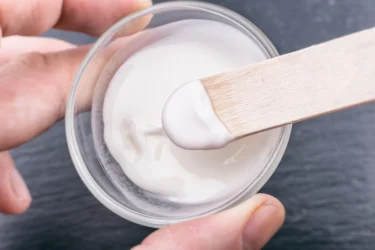
Take equal amounts of baking soda and water. Mix them to create a thick paste. Apply this paste to the mouth ulcer and let it dry out. Once the mixture has dried, rinse your mouth with water and gargle as well. This should be done three times a day.
Baking soda is actually a chemical compound named sodium bicarbonate. This compound is used in many home-cleaning solutions. It also acts as one of the best mouth ulcer cures, as it can reduce the pain significantly2. The baking soda neutralizes the acid formed by the ulcer, which eventually treats the condition.
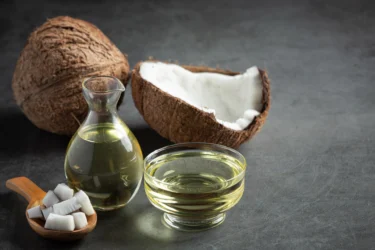
Coconut oil is used in a wide variety of activities across most of India. However, very few people are aware of its healing properties when it comes to mouth ulcers. Simply apply a bit of coconut oil to the surface of the ulcer and let it stay on. You can also apply it while going to sleep at night. Similar to honey, coconut oil includes antimicrobial properties that help to reduce ulcers naturally. The same compound also acts as an anti-inflammatory and analgesic treatment for your mouth ulcers. Applying the oil can reduce the pain caused by mouth ulcers.
Oil pulling where you swish oil in your mouth for several minutes might also help in healing mouth ulcers. Though it can be done with any oil, studies11 have shown that oil pulling especially with sesame oil might be more effective at reducing harmful bacteria in the mouth than chemical mouthwashes. It might also be effective in decreasing plaque and gum inflammation making it a great home remedy for better oral health.
Dr. Nayana Shetty, MBBS, MD
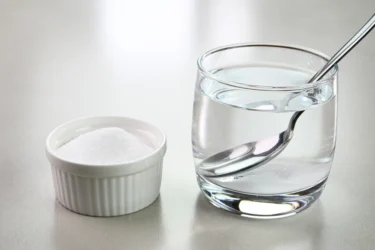
Mix a tablespoon of salt in a glass of lukewarm water. Now gargle thoroughly using this liquid. Once you are done, you can gargle with plain water to remove the salty taste from your mouth. Using this procedure, you can soothe some of the pain and discomfort that you experience during the mouth ulcer4. The antiseptic properties of salt are well known.

Who knew that simple toothpaste can help against mouth ulcers as well? However, any good toothpaste contains antimicrobial properties that can reduce the swelling and pain of mouth ulcers.
Apply the toothpaste using a Q-tip. Ensure that you cover the entire ulcer region with toothpaste. Leave the paste on for a few minutes before rinsing it off. You can keep applying the toothpaste each day until you see the whiteness disappear from the ulcer9. However, applying toothpaste to the ulcer can be quite painful. This pain can be offset by applying aloe vera gel on the spot.
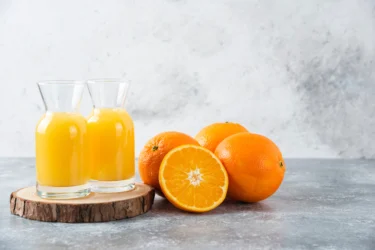
Orange is a great source of Vitamin C, which can prevent and aid mouth ulcers. However, consuming a whole orange may be difficult when you are suffering from these ulcers. A great remedy for mouth ulcers is to drink two glasses of freshly squeezed orange juice every day.
Research has shown that Vitamin C deficiency can lead to mouth ulcers. Apart from this, Vitamin C is known to boost the immunity of a person, allowing their body to fight against all kinds of infections and diseases.
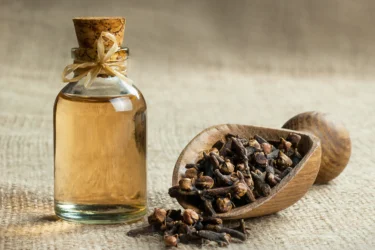
Clove is an essential part of one of the most used spice mixes in India, Garam Masala. Clove oil is extracted from the flower bud. This extract is used in a wide range of natural remedies, including toothache and mouth ulcers. In case of mouth ulcers, take a small piece of cotton and apply the oil directly to the ulcer. Wait till the ulcer tissue absorbs the oil.
Remember to rinse your mouth with warm water prior to the application of the clove oil. This will clean up the surface of the ulcer region. Clove contains eugenol and antimicrobial properties that help deal with all oral issues. The pain and inflammation are also treated by the application of this oil10.
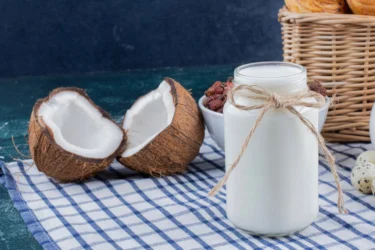
Use coconut milk to gargle when you are suffering from mouth ulcers. This is one of the best remedies for a mouth ulcer. When repeated three to four times each day, you are likely to feel a soothing effect and also reduced pain emanating from your ulcers5.
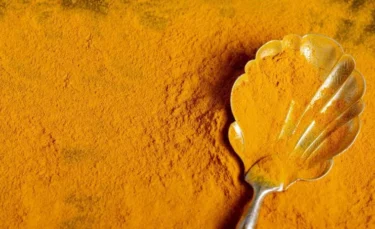
Turmeric is an antiseptic, which is used in almost all Indian dishes. Along with fighting infections, turmeric is also effective in battling against the inflammation and pain from mouth ulcers6. The product has antimicrobial properties as well.
Take a bit of turmeric powder and some water. Mix to form a thick paste. Apply this paste on the ulcers every morning and evening. Leave it on for a few minutes and then rinse it off properly. You should start noticing the difference immediately.
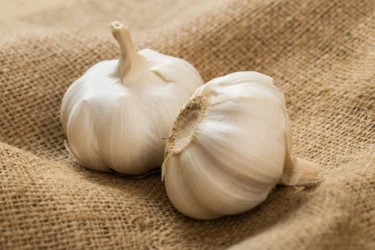
Garlic is another common item in every Indian kitchen. While it is commonly used to flavour curries and dals, garlic can also act as a great remedy for mouth ulcers. The Allisin compound present in garlic makes it antimicrobial, which helps against a range of infections7.
To use garlic, cut a clove in half and dab it on the ulcer spot for a minute or two. After this is done, rinse your mouth properly to remove the raw garlic odour from your breath. You can repeat this twice or even thrice each day.
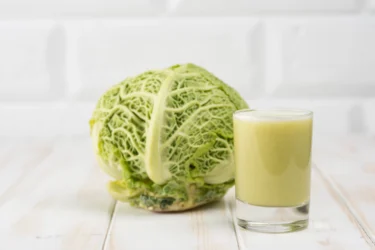
Boil a raw cabbage and puree it once after it is sufficiently boiled. Drink this juice three to four times each day to receive the needed benefits. Cabbage possesses anti-inflammatory properties that can reduce the pain in your mouth, allowing you to consume solid foods easily, even though you may be suffering from severe mouth ulcers.
Also Read: Easy Home Remedies for Bleeding Gums
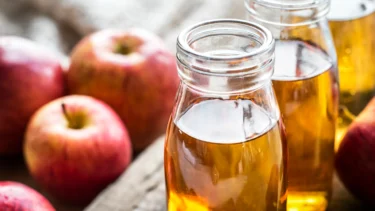
Next time you are at the grocer’s, pick up a bottle of apple cider vinegar. Take a tablespoon of this and mix it with half a cup of warm water. Take this solution inside your mouth and rinse with it. Keep repeating for a minute or two. Once this is done, rinse your mouth thoroughly with plain water. You can keep repeating this every morning and evening, till the time that the ulcer heals.
Apple cider vinegar has anti-bacterial properties that will kill the germs which caused the ulcer in the first place. It will also speed up your recovery.
These are some of the home remedies that will likely improve mouth ulcers. However, there are several kinds of mouth ulcers, each with a different cause and treatment. Some mouth ulcers where bleeding occurs may be more severe than normal ulcers. Try out these hacks and see whether you receive any benefits from them. If you do not notice any improvement, you should visit the doctor immediately.
It is important to understand that oral ulcer cure depends on the type and cause of the ulcer. A doctor can best advise you on this. Above mentioned remedies are popular but lack scientific evidence and may not be effective for everyone.
Capsicum found in chillies and bell peppers, is not just a spice but may also act as a natural remedy for mouth ulcers. Its anti-inflammatory properties may help reduce pain and promote the healing of mouth ulcers, making it a useful addition to your home treatment options.
Dr. Nayana Shetty, MBBS, MD
If you already have a mouth ulcer, avoid some food and drinks to prevent the condition from deteriorating further. You can avoid the following food in order to heal the mouth ulcer faster.
At any rate, most mouth ulcers take around 7 to 10 days to be completely cured. You should have no issue with it once a couple of weeks pass by.
Papaya, specially its fruit and latex (papain) may help with treating mouth ulcers. This fruit is rich in vitamins and papain has natural anti-inflammatory properties that may help in soothing irritation caused by mouth ulcers. Simply applying fresh papaya or papain directly to the affected area may provide relief.
Dr. Nayana Shetty, MBBS, MD
As effective as home remedies may be, you must also have a backup plan in case the home remedies for mouth ulcers fail:
Some other telling signs that can indicate that your mouth ulcer is not just a normal ulcer but could maybe even be mouth cancer are if you smoke products containing tobacco if you drink alcohol quite frequently, and if are infected with human papillomavirus (HPV).
For the best result, follow the medications and home remedies advised by a doctor. The best way to avoid mouth ulcers, however, is to avoid overstressing yourself, maintain proper oral hygiene and follow a balanced diet.
Also Read: Home Remedies For Teeth Whitening By Dr. Siddharth Gupta
Most mouth ulcers are caused by things you can try to avoid, such as biting the inside of your cheek. Braces, badly fitting dentures, rough fillings or a sharp tooth are also responsible for mouth ulcers. Cuts or burns while eating or drinking, for example, hard food or hot drinks can aggravate mouth ulcer causes3, 4.
The combination of salt and hydrogen peroxide will help the sore caused by mouth ulcers heal faster. Sometimes the simplest remedy is the best. You can also add some salt to warm water and rinse for about 30 seconds to get relief.
Aphthous ulcers, also called canker sore, are small painful sores inside the mouth. They are oval-shaped ulcers with a yellow-grey centre that a red ring surrounds. Canker sores typically last 1–2 weeks8.
A mouth ulcer typically appears as a round or oval sore inside the mouth. It is often white, yellow, or gray in color, surrounded by redness, and can be painful or sensitive to touch8.
Yes, bananas can be beneficial for mouth ulcers due to their soft texture and high content of vitamins B6 and C, which can help in healing. They are also gentle on the irritated area and can provide relief from discomfort.
Mouth ulcers are not contagious. They are typically caused by factors such as minor injuries, stress, or certain foods, and cannot be transmitted from one person to another through direct contact or sharing utensils8.
Mouth ulcers can sometimes be a symptom of oral cancer, especially if they do not heal within a few weeks, are accompanied by other symptoms like persistent pain or changes in the mouth’s lining, or if there are risk factors such as tobacco use. It’s important to consult a healthcare professional for proper evaluation and diagnosis3.
B complex vitamins, especially B1 (thiamine), B2 (riboflavin), B6 (pyridoxine), and B12 (cobalamin), are beneficial for mouth ulcers as they support the health of mucous membranes and aid in wound healing. Taking B complex supplements or consuming foods rich in these vitamins can help reduce the frequency and severity of mouth ulcers3.
A mouth ulcer appears white due to the layer of dead cells and fibrin that form over the ulcerated area during the healing process. This white coating is part of the natural response of the body to protect the underlying tissue and aid in healing8.
It is not advisable to pop or burst a mouth ulcer. Doing so can increase pain, delay healing, and potentially lead to infection. It’s best to let mouth ulcers heal naturally and manage discomfort with appropriate oral care or medications as recommended by a healthcare provider.
Yes, a severe or persistent mouth ulcer can sometimes cause nearby lymph nodes to swell as part of the body’s immune response. This reaction typically occurs when the ulcer is inflamed or infected, prompting the lymph nodes to react and become swollen in an effort to combat the underlying issue.
Yes, mouth ulcers can cause referred pain to nearby areas such as the teeth, ears, or jaw. The discomfort may radiate due to shared nerve pathways or inflammation affecting adjacent tissues. Treating the underlying cause of the mouth ulcer can often alleviate these associated pains.
Mouth ulcers typically do not cause fever. However, if a mouth ulcer is severe, infected, or part of a larger systemic issue, it may occasionally be accompanied by a low-grade fever. In such cases, it’s advisable to consult a healthcare professional for proper evaluation and treatment.
Are mouth ulcers caused by stress?
Mouth ulcers themselves are not indicative of HIV (Human Immunodeficiency Virus) infection alone. However, persistent or recurring mouth ulcers can be a symptom of HIV/AIDS in conjunction with other signs like swollen lymph nodes, fatigue, and weight loss. Testing for HIV is necessary for accurate diagnosis if there is concern.
Yes, paracetamol can help alleviate the pain associated with mouth ulcers. It is an analgesic that can reduce discomfort, making it easier to eat and drink. However, it is important to follow the recommended dosage and consult a healthcare provider for persistent or severe pain.
Yes, rinsing with a saltwater solution can help alleviate pain and promote healing of mouth ulcers. The saltwater solution has antimicrobial properties that can reduce inflammation and prevent infection in the ulcerated area4.
Mouth ulcers themselves typically do not cause headaches directly. However, the discomfort or pain associated with severe mouth ulcers, especially if they are large or located in sensitive areas, may contribute to a headache due to increased stress or discomfort.
Smoking can contribute to the development of mouth ulcers. The chemicals in tobacco smoke irritate the delicate tissues of the mouth and throat, leading to increased susceptibility to ulcers. Additionally, smoking can impair the immune system’s ability to heal existing ulcers, prolonging their duration.
Yes, mouth ulcers can contribute to bad breath. The presence of an ulcerated area in the mouth can harbor bacteria and food debris, leading to an unpleasant odor. Additionally, the discomfort caused by mouth ulcers may reduce the effectiveness of regular oral hygiene practices, further exacerbating bad breath8.
Mouth ulcers themselves do not typically cause dry mouth. However, certain conditions that may lead to mouth ulcers, such as stress or certain medications, can also cause dry mouth as a separate symptom. A dry mouth can contribute to discomfort and may affect the healing process of mouth ulcers.
Disclaimer: The information provided here is for educational/awareness purposes only and is not intended to be a substitute for medical treatment by a healthcare professional and should not be relied upon to diagnose or treat any medical condition. The reader should consult a registered medical practitioner to determine the appropriateness of the information and before consuming any medication. PharmEasy does not provide any guarantee or warranty (express or implied) regarding the accuracy, adequacy, completeness, legality, reliability or usefulness of the information; and disclaims any liability arising thereof.
Links and product recommendations in the information provided here are advertisements of third-party products available on the website. PharmEasy does not make any representation on the accuracy or suitability of such products/services. Advertisements do not influence the editorial decisions or content. The information in this blog is subject to change without notice. The authors and administrators reserve the right to modify, add, or remove content without notification. It is your responsibility to review this disclaimer regularly for any changes.
Ashwagandha (Withania somnifera) is a popular herb in the Ayurvedic system of medicine. It is a small shrub that belongs to the Solanaceae family. It might be useful for different diseases and mostly as a nervine tonic (has a soothing effect on nerves). Ashwagandha is commonly called Indian Ginseng or Indian winter cherry. Ashwagandha is known for its rasayana (tonic) property. Rasayana is a herbal or metallic formulation that stimulates a youthful physical and mental state of health as well as happiness1.
Ashwagandha is cultivated in dry regions of South Asia, Africa, and Central Asia. More than 50 chemical constituents have been isolated from different parts of the ashwagandha plant1.
Did you know?
In 100 grams of ashwagandha, the nutrients found are:
The potential properties of ashwagandha are2:
Ashwagandha is also called an ‘adaptogenic’ herb or a ‘royal’ herb since it helps reduce stress and helps your body adapt to changes. It rejuvenates various body systems like the immune, reproductive and endocrine systems9.
Dr. Siddharth Gupta, B.A.M.S, M.D (Ayu)
The potential uses of ashwagandha for human health are as follows:
Ashwagandha might have anxiolytic (anxiety-relieving) properties that are similar to that of the drug lorazepam. Both ashwagandha and lorazepam showed to help reduce anxiety in animal models. Ashwagandha might also exhibit potential antidepressant properties. This indicates that Ashwagandha might help with depression and anxiety1. However, more research is required. Anxiety and depression may need serious attention and one should seek medical help from a professional for it.
Ashwagandha might have potential anti-arthritic properties that may be widely accepted and reported. Ashwagandha might help relieve pain by soothing the nervous system. In an experimental study6, patients were given a formula containing ashwagandha. This herbal formulation showed the potential to reduce the severity of pain and disability1,4. However, arthritis is a serious condition and must be diagnosed and treated by a doctor.
Ashwagandha is a popular Ayurvedic rasayana and belongs to medhyarasayanas, a subgroup of rasayanas. Medhya means mental/intellectual ability. Ashwagandha might help enhance memory and intelligence. This potential of ashwagandha for cognition was seen in children with compromised memory and old age as anecdotal evidence1. However, such claims lack scientific backup. Therefore, more research is required.
The circulatory system and cardiovascular health are adversely affected due to mental stress. Stress also affects the body’s antioxidant defence system7. Ashwagandha might help the body adapt to stress. It may also be effective in improving mental and physical health5. However, more research is required to ascertain such claims.
In a study8, treatment with an aqueous extract of ashwagandha showed potential to increase the pain threshold (a point beyond which a trigger produces pain) compared to that of placebo, showing that ashwagandha might be an analgesic agent. However, further research is required to state these as concrete facts.
Ashwagandha might help deal with problems related to sleep and may contain sleep-inducing properties. It might also help one fall asleep faster and have an improved sleep quality7.
Though there are studies that show the potential uses of ashwagandha in various conditions, these are insufficient and there is a need for further studies to establish the true extent of the benefits of ashwagandha on human health.
Ashwagandha may be helpful in combating hair loss and promoting hair growth. Hair loss usually occurs due to stress. The lactones present in ashwagandha can reduce the levels of cortisol hormone in the body, which relieves stress10.
Dr. Anuja Bodhare, B.A.M.S, M.D (Ayu)
The important formulations of ashwagandha include:
It is also available in the form of tea, pills, gummies, or tincture. The roots, seeds, leaves, and flowers of ashwagandha can be used for medicinal purposes.
You must consult a qualified doctor before taking any herbal supplements. Do not discontinue or replace an ongoing treatment of modern medicine with an ayurvedic/herbal preparation without consulting a qualified doctor.
Did you know ashwagandha contains high levels of polyphenols, mainly catechin, which is responsible for its antioxidant actions? All the parts of ashwagandha, including the roots, leaves and fruits, are rich in catechin, which provides potential health benefits12.
Dr. Smita Barode, B.A.M.S, M.S.
The safety of the long-term use of ashwagandha has not been fully documented. However, the most common side effects of ashwagandha are:
The less common side effects are:
Also Read: Shilajit: Uses, Benefits & Side Effects By Dr. Anuja Bodhare
Ashwagandha might also cause liver damage. It is essential to call your healthcare provider when you experience any side effects, particularly those consistent with liver damage like itchy skin or jaundice7. Therefore, kindly consult an Ayurvedic physician before using ashwagandha. They will tailor the prescription according to your health needs.
Ashwagandha may be helpful in improving the performance of swimmers as it boosts stamina. It is possible that the duration that can be covered by swimmers taking ashwagandha is longer than those not taking it1.
Dr. Ashok Pal, B.A.M.S.
Ashwagandha must be avoided in some conditions like:
Kindly do not self-medicate, alter, replace, or discontinue any ongoing treatment. Please consult a doctor.
Ashwagandha is derived from two words: ashwa, meaning ‘horse’ and gandha, meaning ‘smell’. It is named so because the fresh roots of ashwagandha emit the smell of a horse. It is believed to boost vitality and strength in your body, comparable to a horse11.
Dr. Rajeev Singh, BAMS
It is essential to take precautions when using ashwagandha with:
To make sure that ashwagandha does not interfere with other medications, it is essential to consult your physician4.
Also Read: Arrowroot Powder: Uses, Benefits, Side Effects By Dr. Smita Barode
Ashwagandha is a well-known herb used in Ayurvedic medicine. Its common names include winter cherry and Indian ginseng. It is obtained from a small evergreen shrub known as Withania somnifera. Ashwagandha might be helpful for a wide variety of ailments7.
In India, ashwagandha is cultivated in Uttar Pradesh, Gujarat, Rajasthan, Punjab and Madhya Pradesh4.
The decoction of the roots of ashwagandha might be helpful for colds and chills. The root bark might be helpful for asthma4. Kindly do not self-medicate. Consult a doctor before taking ashwagandha for the common cold.
In Ayurvedic medicine, the root of ashwagandha is used as an anti-inflammatory agent by an Ayurvedic physician for dealing with tumours, swellings, scrofula (a type of tuberculosis), and rheumatoid arthritis (a condition affecting joints and bones)4. However, you are advised not to use ashwagandha for the above-mentioned conditions by yourself. Kindly consult an Ayurvedic physician for the same.
Ashwagandha is indicated in conditions like syncope (temporary loss of consciousness associated with insufficient blood flow to the brain), piles, tumours, cervical lymphadenitis (enlargement of neck lymph nodes), gout (a type of arthritis), diseases of the skin, vitiligo (a disorder that causes the skin to lose color), lockjaw, heart failure, abscesses (a painful collection of pus), stiffness of the knee, cachexia (muscle and weight loss), bone fracture and diabetic carbuncle (cluster of painful boils)4. Kindly consult a doctor. Do not self-medicate.
Ashwagandha, an adaptogenic herb, is known to reduce stress, boost immunity, improve cognitive function, and enhance overall vitality. Its active compounds may help regulate cortisol levels, promote relaxation, and support physical endurance, making it a popular choice in traditional medicine and wellness practices.
The recommended dosage of ashwagandha typically ranges from 300 mg to 600 mg per day for most adults, divided into two or three doses. However, it’s crucial to consult with a healthcare professional to determine the appropriate dosage based on individual health factors and specific needs.
While ashwagandha is generally not associated with weight gain, some studies suggest it may support weight management by reducing stress-related overeating and regulating cortisol levels. However, individual responses may vary, and it’s advisable to consult with a healthcare provider before incorporating ashwagandha into a weight management regimen.
Ashwagandha has been studied for its potential to increase testosterone levels in men with low levels or infertility issues, attributed to its ability to reduce stress and improve overall hormonal balance. While research shows promising results, individual responses may vary, and consulting with a healthcare professional is advisable before using ashwagandha for this purpose.
Disclaimer: The information provided here is for educational/awareness purposes only and is not intended to be a substitute for medical treatment by a healthcare professional and should not be relied upon to diagnose or treat any medical condition. The reader should consult a registered medical practitioner to determine the appropriateness of the information and before consuming any medication. PharmEasy does not provide any guarantee or warranty (express or implied) regarding the accuracy, adequacy, completeness, legality, reliability or usefulness of the information; and disclaims any liability arising thereof.
Finger millet, commonly known as ragi, is a cereal grain widely eaten in South India and parts of Africa. It is often appreciated for its high fibre content and is naturally rich in calcium and iron, making it a valuable part of traditional diets.
Ragi is also commonly prepared as a porridge for infants in some regions, usually once they are a few weeks old and under proper guidance. Its smooth texture and mild taste make it a popular choice for early weaning foods in certain cultural practices1.
While ragi is sometimes included in diets focused on weight management or balanced blood sugar, it should be seen as part of an overall healthy eating plan. Anyone with specific health conditions, such as diabetes, should consult a healthcare professional for personalised advice.
Did you know?
Before the 1950s, whole grains such as ragi, brown rice, and barley were commonly grown using traditional farming methods and formed a significant part of regional diets in India. Over time, with the widespread adoption of polished white rice as a staple and lifestyle shifts brought on by urbanisation and the rise of the information technology sector, many people began relying more on processed and convenience foods.
As a result, there has been growing interest in returning to nutrient-rich whole grains like ragi, which are naturally high in fibre, calcium, and iron. Health professionals often recommend including such grains as part of a balanced diet. Unfortunately, ragi is less common in the diets of many teenagers today.
This article aims to highlight the potential long-term benefits of incorporating ragi into everyday meals as part of a healthy lifestyle.
Ragi contains a unique protein called eleusinian, which contributes to its nutritional value. It is often regarded as a good plant-based protein source, particularly for vegetarians. One of the amino acids present in ragi, methionine, makes up around 5% of its total protein content.
Ragi has been cultivated for centuries and is known for its ability to grow in high altitudes and survive in tough climatic conditions. Because the grain is so small, it is not polished like other cereals, which means it is usually consumed in a more natural, unprocessed form. This helps it retain more of its original nutrients, including complex carbohydrates2.
Ragi is naturally high in dietary fibre, which may help you feel fuller for longer and reduce the tendency to snack between meals. Because of this, it is often included in meal plans focused on healthy weight management.
It also contains an amino acid called tryptophan, which is thought to play a role in regulating appetite. Including ragi as part of a balanced breakfast is a common practice in many regions, as it can be both filling and nutritious3.
While ragi is sometimes recommended as part of a diet for managing blood sugar levels, it is not a substitute for medical treatment or insulin. Always consult a healthcare professional for personalised advice, especially if you have diabetes or other health conditions.
Ragi contains naturally occurring nutrients, including amino acids such as methionine and lysine. These nutrients, along with antioxidants found in the grain, are believed to support overall wellbeing and are sometimes linked to skin health when part of a balanced diet.
While ragi is not a treatment for skin conditions or ageing, a nutritious diet that includes whole grains may contribute to a healthy appearance over time. Its nutritional profile makes it a valued ingredient in many traditional diets4.
Ragi contains small amounts of Vitamin E, a nutrient that is known to support skin health as part of a balanced diet. Vitamin E contributes to maintaining the skin’s natural moisture and is often associated with helping the skin feel soft and well-nourished.
While it is not a medical treatment, including foods rich in vitamins, such as ragi can be a part of a healthy lifestyle that supports overall wellbeing.
Ragi is a source of plant-based protein, which plays an important role in overall nutrition. Since hair is largely made of a protein called keratin, consuming a balanced diet that includes adequate protein may support the body’s natural processes involved in hair growth5.
Ragi also contains nutrients such as magnesium and antioxidants, which are believed to contribute to general wellbeing. While ragi is not a remedy for hair loss or greying, maintaining good nutrition through whole grains like ragi can be part of a healthy lifestyle that supports the body’s functions, including those related to skin and hair.
Ragi is well known for being one of the richer plant-based sources of calcium among commonly consumed grains. Calcium is essential for the development and maintenance of healthy bones and teeth, and a balanced diet that includes calcium-rich foods can help support long-term bone health.
Approximately 100 grams of ragi contains around 350 milligrams of calcium, making it a valuable addition to vegetarian and plant-based diets6. Ragi porridge (commonly known as ragi kanji) is a traditional way to enjoy this grain, especially in parts of South India.
While dietary sources of calcium are important, individuals with specific health conditions—such as osteoporosis, should follow professional medical advice regarding supplementation or treatment.
Green ragi (sprouted finger millet) is traditionally included in the diets of many lactating women in parts of India. It is known to contain nutrients such as iron, calcium, and amino acids, which are important for overall maternal nutrition.
While a healthy diet can support a mother’s wellbeing during breastfeeding, it’s important to remember that dietary needs vary for each individual. Including nutrient-rich foods like green ragi may be beneficial as part of a balanced postnatal diet, but it should not be seen as a guaranteed way to influence breast milk production7.
Lactating women are encouraged to consult with a doctor or nutritionist to ensure they are meeting their nutritional needs for both themselves and their babies.
Ragi contains dietary fibre and natural compounds like polyphenols, which are often associated with slower digestion and a feeling of fullness. Compared to many other whole grains, ragi has a relatively high fibre content, which may help support steady energy levels throughout the day.
Some people include ragi in their meals as part of a diet aimed at maintaining balanced blood sugar levels. Its slower digestibility may contribute to prolonged satiety, which can be helpful in managing appetite8.
While ragi is considered a wholesome addition to a balanced diet, individuals with diabetes or related conditions should follow medical advice when planning their meals.
Ragi is a good source of dietary fibre, which plays an important role in supporting digestive regularity as part of a balanced diet. Fibre-rich foods like ragi may help promote smoother digestion and contribute to overall wellbeing.
Ragi is also versatile in the kitchen. From traditional dishes like ragi dosa and ragi balls (ragi mudde) to modern recipes like porridge or baked goods, it’s a wholesome grain that can be enjoyed in many delicious ways9.
Including ragi in your meals is one simple way to add variety and nutritional value to your diet.
In traditional food cultures, ragi is sometimes described as having a naturally cooling effect on the body, especially when consumed during the hot summer months. It is often included in meals for its light, wholesome qualities.
While ragi is not a treatment for mental health conditions such as anxiety, insomnia, or depression, including fibre-rich whole grains in your diet may support general wellbeing and help you feel nourished and satisfied10.
If you’re experiencing sleep disturbances or emotional stress, it’s important to speak with a qualified healthcare professional.
Ragi contains dietary fibre and natural plant compounds such as phytonutrients and lignans. These are studied for their potential roles in supporting digestive health and overall well-being when included as part of a balanced diet.
While some research has explored the relationship between fibre-rich diets and long-term health outcomes, ragi is not a treatment or preventive measure for cancer. Anyone concerned about their cancer risk should consult a qualified healthcare professional for personalised advice11.
Researchers1 have found that the rich antioxidant content of ragi may play a role in supporting tissue repair and wound healing.
Dr. Siddharth Gupta, B.A.M.S, M.D (Ayu)
While ragi offers notable nutritional value, its taste may be unfamiliar to those trying it for the first time. However, with regular inclusion in meals, many individuals become accustomed to its distinctive flavour. Given its versatility and composition, ragi can serve as a beneficial component of a balanced and varied diet when consumed as part of a healthy lifestyle.
Masala dosa is a much-loved dish across South Indian households. For those seeking to increase the nutritional value of their meals, ragi flour can be incorporated into the traditional dosa batter to prepare a variation known as ragi masala dosa. When served with potato curry, it offers a flavourful and satisfying breakfast option, combining taste with the benefits of whole grains.
Preparation Time: Approximately 35 minutes
Before you begin, ensure that you have the following ingredients ready:
How To Prepare Ragi Onion Masala Dosa
Preparation Time: Approximately 30 minutes
To prepare soft, flavourful, and healthy ragi idlis, ensure the following ingredients are assembled before beginning.
Ingredients of Ragi Idli
How To Prepare Ragi Idli
Also Read: 11 Incredible Health Benefits Of Fennel Seeds (Saunf)
Weight loss efforts often involve reducing sugar intake, which can be challenging for those with a sweet tooth. However, a nutritious alternative like ragi halwa allows you to satisfy occasional sweet cravings without compromising your health goals.
Ingredients of Ragi Halwa
How to Prepare Ragi Halwa
According to studies12, the phenolic content in ragi, particularly the tannins may help provide resistance against fungal infections. These compounds, concentrated in the outermost layer of the grain, act as a structural barrier to fungal invasion. Research indicates that acidic methanolic extracts from the ragi seed coat, which is rich in polyphenols, exhibit stronger antifungal and antibacterial activity compared to similar extracts from whole wheat.
Dr. Rajeev Singh, BAMS
While ragi is rich in essential nutrients and offers numerous health benefits, it should be consumed in moderation. Excessive intake may lead to an increase in oxalic acid levels in the body, which is not advisable for individuals with kidney stones. As part of a balanced diet, ragi can support overall wellbeing, but it should not become the sole focus of one’s nutritional habits.
Also Read: 12 Ways How Avocado (Butter Fruit) Can Benefit Your Overall Health And Skin
Incorporating ragi into your daily meals can offer a range of health benefits, from improved digestion to better bone health. Its rich nutritional profile makes it a valuable addition to a balanced diet. However, like any food, it should be consumed in moderation and tailored to individual health needs.
Also Read: 10 Best Foods For A Healthy Gut System
Yes, it is safe and beneficial to include ragi in your daily diet. Ragi is a nutritious whole grain rich in fibre, calcium, and iron. Its gluten-free nature and low glycaemic index makes it suitable for regular consumption supporting digestive health and overall well-being.
Individuals with a history of kidney stones or oxalate-related issues should limit their ragi intake due to its oxalate content. However, for those with gluten sensitivity or celiac disease, ragi is a safe option as it is gluten-free. Always seek personalised advice from a healthcare professional to assess if ragi is suitable for your specific health condition.
Yes, ragi is a valuable food for weight loss and diabetes management. Its high fibre content promotes a feeling of fullness, reducing overall calorie intake. The complex carbohydrates in ragi have a low glycaemic index, which helps in better blood sugar management, making it beneficial for individuals with diabetes.
Yes, ragi can be a beneficial addition to the diet during pregnancy. Its iron and calcium content supports the increased nutrient requirements during pregnancy, and the fibre may help in digestion. Pregnant women can include ragi in various forms, but it is advisable to consult a healthcare provider for personalised dietary recommendations.
Ragi is an excellent option for introducing solid foods to infants and toddlers. Its nutritional profile supports healthy growth and development. Ragi porridge or homemade ragi-based baby food can be introduced gradually to infants around six months of age, following the recommendations of paediatricians.
Disclaimer: The information provided here is for educational/awareness purposes only and is not intended to be a substitute for medical treatment by a healthcare professional and should not be relied upon to diagnose or treat any medical condition. The reader should consult a registered medical practitioner to determine the appropriateness of the information and before consuming any medication. PharmEasy does not provide any guarantee or warranty (express or implied) regarding the accuracy, adequacy, completeness, legality, reliability or usefulness of the information; and disclaims any liability arising thereof.
Next Page »« Previous Page